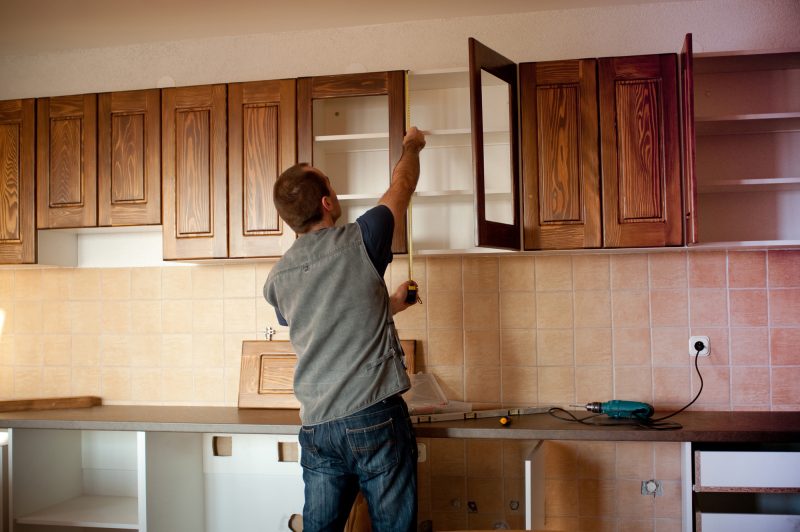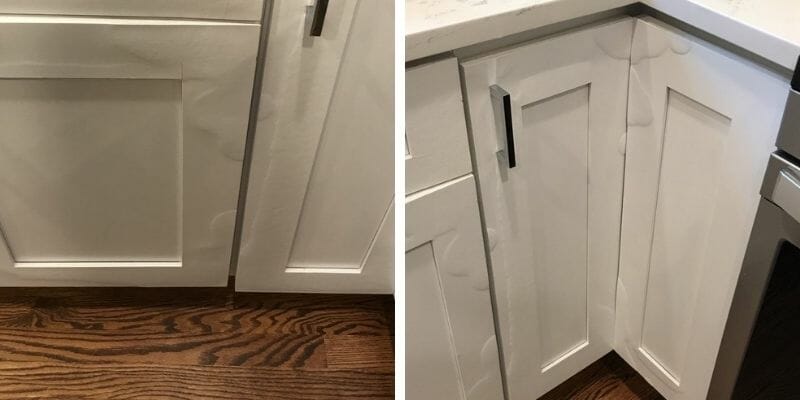Usual Sources Of Water Damage in the Kitchen
Usual Sources Of Water Damage in the Kitchen
Blog Article
Nearly everybody has his or her own piece of advice on the subject of How To Prevent Water Damage To Your Kitchen.

The kitchen area is the room where a great deal of water task goes on. You can rarely do anything without utilizing water in the cooking area, from food preparation, cleaning, and also doing the dishes.
Hence, checking your kitchen area periodically is a necessity. Since it has a greater opportunity of getting water damage due to the home appliances you make use of there, this is.
When faulty, these home appliances that regulate water could make your kitchen area untidy and also affect the structure of your structure in the long run.
Let's check out some reasons of the water damage in the cooking area and what you ought to look out for.
Some Root Causes Of Water Problems in the Cooking area
These are a few reasons for water damage in the kitchen.
Faulty Kitchen Sink
The kitchen area sink is a crucial and also the majority of used part of the kitchen. Thus it is prone to water damage; problems such as obstructed pipelines, dripping pipelines, and defective faucets.
These damages can be irritating, particularly when one is hectic in the kitchen area. It does not simply take place without offering a hint or a sign. So right here are some indications to understand when your sink is not alright
These are the major problems that can occur to your kitchen sink. However, one means to stop this damages is by making sure that food bits do not get into the pipelines. You are also examining the taps and pipelines and making certain that it is correctly dealt with as well as in good condition.
Leaking Dishwashing machine
Dishwashers make life in the kitchen area easier. Nonetheless, it is an optional kitchen device and, when readily available, can be a source of water damage. On top of that, like other equipments, it will establish faults gradually, even with maintenance.
Among the faults is leaking via the door or beneath the dishwashing machine. These faults establish as a result of age, splits, wrong use, loose links to pipelines, etc.
Mistakes due to age originated from continuous use. As a result, the door leaks as a result of closing as well as opening.
Likewise, mistakes from the wrong use may trigger water damage by presenting cracks to it. It is advisable to comply with the hand-operated overview of the dishwasher to prevent this specific damages.
The leakages under the dish washer can come from cracks in the gasket, hose pipe, as well as incorrect or loose connection to water pipes or drains pipes.
This sort of leakage frequently goes unnoticed as well as can be there for a long period of time. Nonetheless, as a result of the time frame, it could damage the floor and trigger mold and mildew development.
Much more so, the longer the water stays, you will discover the warping of the floor where the dishwashing machine is. When inspecting if your dishwashing machine leakages, this is a great indication to look out for. Identifying as well as repairing this in a timely manner stops major water damage to your flooring.
Faulty Drain Pipes
Drain Pipelines are essential parts of our residences, specifically in our bathroom and kitchens. Nonetheless, they obtain defective by getting blocked, cracked, and also ruptured. Or worse, they can be mistakenly or freely linked; whichever the case might be, it can be a serious problem.
Faulty drainpipe pipes can create water damage as well as, consequently, create mold and mildew growth and also damage the look of your wall surface. It can also make the damaged location look messy.
Consequently, it is recommended constantly to check to make sure that all the pipes remain in good condition as well as obtain a sound pipes system to preserve and take care of any concerns.
Bottom Line
Keeping an eye out for damages in your cooking area can be entrusting but needed. It makes your job there easier and much safer.
Nevertheless, the reasons detailed above are only a few factors to think about, particularly if your kitchen area has a great deal of home appliances.
Get an expert pipes solution to come about as well as inspect for any kind of damages and get them taken care of.
It makes your kitchen location unpleasant and wet, particularly when leaking from the pipelines. And if it is dripping from the faucet, it leads to water wastage.
It is an optional kitchen area device and, when offered, can be a resource of water damage. Much more so, the longer the water remains, you will certainly discover the bending of the flooring where the dishwasher is. Identifying and also fixing this on time stops serious water damage to your flooring.
Flooded Kitchen – What to Do
Coming home to a flooded kitchen can be an unpleasant surprise as you immediately start thinking about how much this problem will cost to fix. While the feeling can be frustrating, there are actually a number of steps you can take to eliminate extra time and costs when it comes to making the repairs and restoring the water damage. However, if you are able to make the repairs yourself, it is still important to have the area inspected by a professional to ensure that the problem does not return in the future.
What causes kitchen flooding?
Kitchens can flood for numerous reasons, some of which are out of the homeowner’s control. Overflowing sinks, for example, are just one cause of a kitchen flood. Clogs can send wastewater back up through the sink drain and into the kitchen.
Furthermore, kitchen faucets can leak when the pipes around the water supply line become corroded. Pipes can loosen or crack, and even new PVC pipes are vulnerable to developing small cracks. When gaskets wear out along areas where the pipe meets the faucet, leaks and subsequent flooding can occur.
How to clean up kitchen flood?
If the flooded area is not severe, you may be able to dry it out yourself with a mop and bucket; however, for larger areas, don’t hesitate to call a water damage restoration professional. In addition, if you can see that the problem has been ongoing for a few days or more, you will want to contact a mold remediation professional as it is likely that the fungus has developed over time. But while waiting for the technicians to arrive, you can get a head start on the drying process by taking the following steps:
Remove all excess water. If you have a shop vac that is able to remove water, this would be the most efficient tool. Otherwise, a mop and a bucket will be handy. Increase air flow. After the excess water has been removed, it is likely that the building materials and furnishings are still wet. To dry them out, turn on the air conditioner or dehumidifier. If weather conditions are dry, open the exterior windows to allow for additional air to circulate the property. However, if sewage water has seeped into the air conditioning unit, do not use it. Open drawers and cabinets. Moisture can easily accumulate within these smaller areas; be sure that they are all open to allow dry air to flow throughout the space. Avoid damaged electrical items. If any kitchen appliances, such as the toaster, blender, microwave, oven, etc. have been damaged by the water, do not use them. Have them inspected by a professional to determine if they are safe to reuse. Do not lay down magazines or newspaper. Although paper is quick to retain water, the ink will quickly bleed onto the floor and cause a bigger mess. Dry off wet furniture. If any upholstery has been damaged from the water, wipe them down thoroughly. But be careful when drying off wood furniture; this type of material becomes severely weakened after having contact with water. How to Clean Wet Cabinets in a Flooded Kitchen
A flood caused by any of the abovementioned scenarios will lead to water damaged kitchen cabinets. Cleaning the water damaged cabinets right away is important since water damage spreads quickly. Whether the cabinets are made of wood or plywood, proper cleaning tactics help salvage them.
Upon removing the standing water, remove the cabinet doors and dry them with a household fan. Keep the cabinet doors flat to prevent warping. The cabinets should also be dried—however, with multiple high-volume fans and a dehumidifier that run over the course of one full day.
https://restorationmasterfinder.com/restoration/flooded-kitchen-what-to-do/

As an avid person who reads about Most Common Causes of Residential Water Damage , I was thinking sharing that segment was smart. I beg you take the time to share this blog post if you liked it. Thanks so much for taking the time to read it.
Get An Estimate Report this page